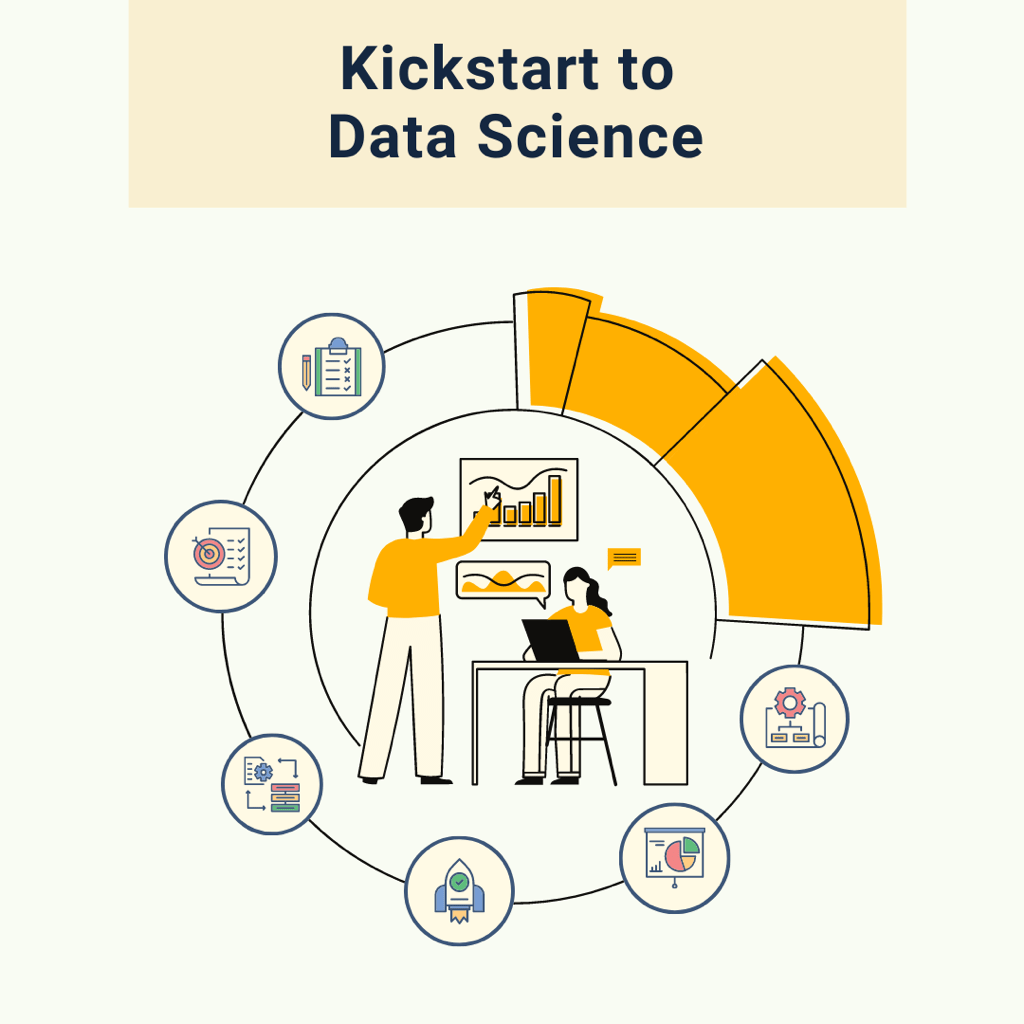Data science is an interdisciplinary field that encompasses the scientific processes used to build predictive models. In turn, enabling a data science lifecycle to kickstart business decision-making through interpreting, modeling, and deployment.

Now, What is Data Science?
Data science is a combination of various tools and algorithms that are used to discover hidden patterns within raw data. Data science career is different from other techniques in the way that it enables the predictive capabilities of data.
A Data Analyst mainly focuses on the visualizations and the history of the data whereas a Data Scientist not only works on the exploratory analysis but also works on extracting useful insights using several kinds of machine learning algorithms.
Why do We Need Data Science?
Some time ago, there were only a few sources from which data came. Also, the data then was much smaller in size, hence, we could easily make use of simple tools to identify trends and analyze them. Today, data comes from many sources and has mostly become unstructured so it cannot be so easily analyzed.
The data sources can be sensors, social media, sales, marketing, and much more. With this, we need techniques to gain useful insights so companies can make a positive impact, take bold steps, and achieve more.
Who is a Data Scientist?
Data scientists are professionals who use a variety of specialized tools and programs that are specifically designed for data cleaning, analysis, and modeling. Amongst the numerous tools, the most widely used is Python, as cited by data scientists themselves.
There is also a huge variety of secondary tools like SQL and Tableau. This contradicts the conventional understanding that becoming a data scientist takes years and years of experience and training. Additional skills and knowledge can provide them with exposure to programming languages or other related technology.
While there are various statistical programming languages, R and Python are amongst the most renowned data science programming languages. R is purpose-built for data mining and analysis. Contrastingly, Python is a general-purpose programming language that also caters to data analysis operations.
Data scientists must have a set of data preparation, data mining, predictive modeling, machine learning, statistical analysis, and mathematics skills. Along with that, they must also have experience with coding and algorithms. They are also required to create data visualizations, reports, and dashboards to illustrate analytical findings.
Prepare for your data science interview with this blog
Data Science Lifecycle
Any project starts with a problem statement and Data Science helps us to solve this problem statement with a series of well-designed steps. The steps are as follows:
- Data Discovery
- Data Preparation
- Model Planning
- Model Building
- Communicate results
- Operationalize
1. Data Discovery
First, we need to identify the source of data. The data can come from a file, a database, scrapers, or even real-time streaming tools. Nowadays, there is Big Data which just simply refers to the four V’s:
– Volume: Data in terabytes
– Velocity: Streaming data with high throughput
– Variety: Structured, semi-structured, and unstructured data
– Veracity: quality of the data
2. Data Preparation
In this part, Data Scientists understand the data and get to know if this is the right one which solves the problem. There are several cleaning steps in this phase such as getting the data into a required structure, removing unwanted columns. This is the most time-consuming and the most important step in this lifecycle.
Participate in Data Science competitions to improve your skills
5 data science competitions to uplift your analytical skills
3. Model Planning
Next, Data Scientists identify relationships between different variables which will then be used in the next step of building the algorithm. Data Scientists use Exploratory Data Analysis to achieve this milestone. EDA helps in gaining insights about the nature of the data.
4. Model Building
In this step, datasets are prepared for the training and testing phase. There are several techniques in model building such as classification, association, and clustering. Several tools are available to build a model:
- SAS Enterprise Miner
- Matlab
- Statistica
5. Communicate Results
In this step, data scientists report and document all the findings about the project. The results must be communicated to the stakeholders in order to decide whether to go on to the next step or not. This step decides if the project will be operationalized or stopped.
6. Kickstart and Operationalize
Lastly, Data Scientists deploy the project for the users to use it. Before this there may be a phase of a pilot project deployment which will get the basic insights on the performance and the issues. If that phase is cleared, then the project is ready to move to the full deployment phase.
This was all about how you can kickstart your learning about Data Science skills. For a more in-depth understanding, you can watch our beginners friendly YouTube playlist on Data Science:
You can also attend this tailor-made Data Science bootcamp if you are an absolute beginner



